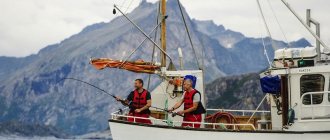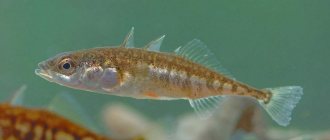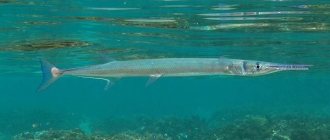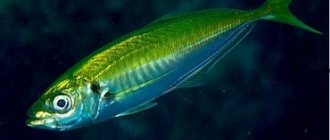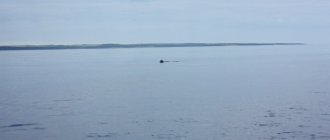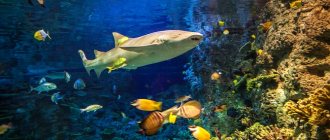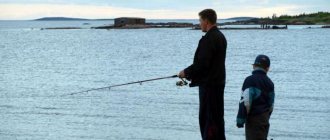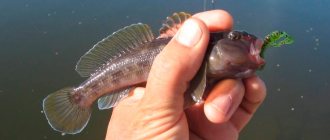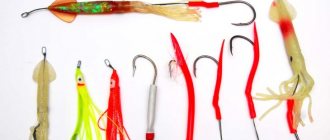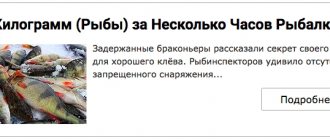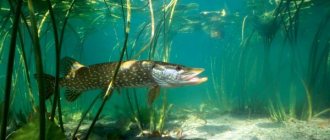Caspian Sea
is inland and located in a vast continental depression on the border of Europe and Asia.
The Caspian Sea has no connection with the ocean, which formally allows it to be called a lake, but it has all the features of the sea, since in past geological eras it had connections with the ocean. The Caspian Sea is home to more than 107 species of fish, including stellate sturgeon, bream, carp, carp, sturgeon, perch, mullet, pike, pike perch, beluga, salmon, roach and many others. The flora and fauna of the Caspian Sea are also very rich. Fishing in the Caspian Sea
, provided that the gear and bait are selected correctly, can please you with very good catches.
Geography of the Caspian Sea
Caspian Sea
The Caspian Sea is located inside the continent between Europe and Asia; several states have access to it: Russia, Iran, Kazakhstan, Turkmenistan and Azerbaijan. According to the bottom topography, the Caspian Sea is divided into three parts: northern, middle and southern.
The northern part of the sea is the shallowest, the average depth here is 6 meters, the maximum is 27 meters, it extends to the Mangystau Peninsula, after which the middle, deeper part of the sea begins, here the average depth is 21 meters, and the maximum reaches 789 meters. The middle and southern parts are separated by the Absheron Peninsula. The southern part of the Caspian Sea is the deepest, the average depth here is about 350 meters, and the maximum reaches 1028 meters.
The waters of the Caspian Sea occupy a long and wide trough of the earth's crust, which crosses several heterogeneous morphostructures from north to south. In the north it is the outskirts of the Russian Platform; in the middle part – the southeastern continuation of the Cis-Caucasian foothill trough, limited from the south by the Caucasus-Kopet Dag underwater threshold; in the extreme south - the deepest (up to 995 m) trough, located in front of the Elbrus mountain arc, on the territory of Iran. Thus, only 1/3 of the northern coast of the Caspian Sea lies within the platform, and its central and southern parts are in a zone of high tectonic mobility, as evidenced by land movements that continue to this day, especially intense on the Absheron Peninsula.
The Caspian Sea has another amazing feature. In reality, this lake still has a flow. Through a narrow strait, water from the Caspian Sea flows into the Kara-Bogaz-Gol Bay, which means “black abyss” in Turkmen. Due to the Karakum heat, water evaporates from the surface of the flat-bottomed and vast bay with such intensity that a level difference is created between it and the sea. Therefore, the Caspian water rushes into the evaporation bay in a strong stream, forming the permanent Adzhidarya River.
With its more than 1000-kilometer length in the direction from north to south, there is a significant diversity of climatic conditions. The northern part of the Caspian Sea is located in an area with a continental temperate climate with its characteristic frosty and stormy winters, and the south is adjacent to the Mediterranean-type subtropical zone with hot, dry summers and mild, wet winters.
In the winter season, stormy winds blowing from Kazakhstan rage in the Caspian Sea, and the northern part of the sea to the line Chechen Island - Mangyshlak is covered with ice in December. Northern winds carry floating ice floes far to the south. Winter Mediterranean cyclones with rains dominate over the southern part of the sea, in the polar front zone. In summer, the Caspian Sea is hot and the weather is mostly calm.
What kind of fish is found in the Caspian Sea: list, description, interesting facts
The Caspian Sea is not only the largest lake on Earth (yes, since it is not connected to any ocean, it is precisely a lake), but also one of the most productive bodies of water in Russia. There is a huge variety of fish found here. Some of them are caught by commercial methods, while others are generally prohibited from being caught. Therefore, it is not surprising that many fishing enthusiasts would like to know what kind of fish is found in the Caspian Sea. Let's talk about this in more detail.
A little about the Caspian Sea
This body of water is unique from many points of view. Let's start with the fact that the salinity of the water in it changes significantly from north to south. In the north, where the Volga flows into it, the water has a relatively low salt content. But in the south this figure increases significantly - moreover, here the Caspian Sea borders on the saltiest body of water on the planet. It turns out that it is not the Dead Sea at all, as many people think, but Lake Kara-Bogaz-Kol, located in Turkmenistan. If the salinity of water in the Dead Sea is 300 ppm, then in this lake it reaches 310.
Thanks to this variation in salinity, the answer to the question of what kind of fish is found in the Caspian Sea should be a very long one. Here you can find both freshwater and rocks accustomed to highly salty water.
What kind of fish lives here?
According to experts who tell us what types of fish are found in the Caspian Sea, this list is very large - 141 species. Here you can find both tiny buttonfish, the largest of which are no longer than a matchstick, and huge belugas. These are the largest representatives of freshwater fish, the weight of which can reach 2 tons and a length of 9 meters. It was in the Caspian Sea that a female beluga was caught in 1924, and 246 kilograms of caviar were found in her stomach.
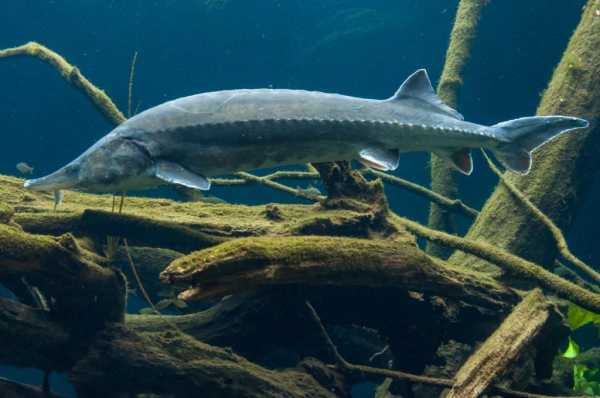
Most fish species (about 120) are “old-timers”, that is, they came here naturally, took root and reproduce successfully. Moreover, five of them are endemic, that is, they are not found anywhere else in the world! Finding themselves in new, unusual conditions, their distant descendants were forced to change in order to survive. This is how completely unique fish appeared, living only in an extremely limited area.
In addition, more than 20 species of fish were introduced here artificially. Favorable living conditions and year-round warm water have led to the fact that they grow quickly and actively reproduce, representing serious interest for many fishermen.
And now, in order for the reader to better understand what kind of fish is found in the Caspian Sea, we will tell you about each of these groups in more detail.
Pisces "old-timers"
This is the most numerous category of fish. If we were to list what kind of fish is found in the Caspian Sea, the list would be truly impressive - almost 120 species.
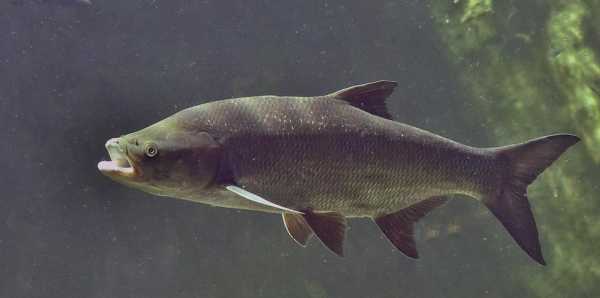
They came here from different places and at different times. For example, some ended up in the lake at the time of its formation - about 70 million years ago. This includes gobies (Berg, Knipovich and others) and herring (bellied, Brazhnikovskaya, golovach and others). Some of them live in salt water all year round, while others go to spawn at the mouth of the Volga or even go upstream along the river to spawn in calm backwaters.
Others got here much later - already in the post-glacial period. These are nelma, whitefish and brown trout. They usually live exclusively in cold water, being an arctic species. But once in the warm water of the Caspian Sea, they not only took root, but also changed significantly compared to their relatives, mainly becoming larger and more fertile.
There are quite a lot of fish that are usually exclusively freshwater, but when they get into salt water they manage to adapt and survive. These are pike perch, barbel, catfish, asp, grass carp, asp, as well as sturgeon, stellate sturgeon and beluga. In general, if you are interested in what kind of red fish is found in the Caspian Sea, this list can be expanded. After all, several species of salmon also live here. In general, this body of water is a place of serious concentration of sturgeon - almost 80% of the individuals living on the globe live here!
Endemic species
The list of endemic breeds is significantly smaller. Which is not surprising - such living organisms are generally extremely rare. That is why they should be taken care of especially carefully.

This group includes the Caspian spined loach, the spiny-headed goby, as well as the Caspian bighead goby. Surprisingly, you can only see these fish in the Caspian Sea - they do not live in any other body of water on planet Earth! And even here their habitat is usually very limited - they occupy a small niche in relatively small areas.
New arrivals
In Soviet times, a series of experiments were carried out on the resettlement of certain species of fish from other bodies of water to the Caspian Sea - mainly the Mediterranean Sea, which was similar in temperature and salinity of water. This is how the singil sharpnose, Black Sea flounder, needle fish, and some others got into the Caspian Sea. They look completely different - photos illustrating what kind of fish is found in the Caspian Sea will allow the reader to see this.

Suitable living conditions, combined with the absence of usual predators, allowed them to confidently gain a foothold, displace the old-timers, and even become the main source of commercial prey.
Conclusion
This is where we can end the article. Now the reader knows what kind of fish is found in the Caspian Sea, as well as the main ways it gets into this amazing body of water. All that remains is to urge both ordinary amateur fishermen and commercial fishermen to treat this lake with the utmost care. After all, even what seems like an endless source of valuable resources may one day run out.
Just a century ago, not returning from fishing with a pound of pike was a shame for local fishermen. Today, pike weighing 5 kilograms are rare. There is no need to talk about beluga and sturgeon - the high cost of caviar has led to the fact that they are hunted predatorily. For example, a beluga needs at least 70-80 years to grow to its legendary weight of 700-800 kilograms. Alas, the vast majority of fish today simply do not live to that age and are caught much earlier - by poachers or legal fishermen.
fb.ru
Fishes of the Caspian Sea
The world of fish in the Caspian Sea is surprisingly diverse. This applies to both their appearance and lifestyle. Let's take at least two most important characteristics - length and mass - and we will see that among the fish there are giants and midgets. Both of them live in the Caspian Sea. There is also beluga - the largest freshwater fish on the globe, and tiny little fish from the goby family - Gobiidae (some of them are smaller than an ordinary matchstick). The length and weight of fish of each species are determined by hereditary factors, but the conditions of the aquatic environment (temperature, amount of food) can also affect the growth pattern, modifying it. Determining the maximum size of a fish, as well as its possible lifespan, is not an easy task. Very few fish survive to what is called natural death. Throughout their lives, especially at a young age, they are at risk of death from unfavorable factors in the aquatic environment, predators, and diseases. Some fish, such as lamprey or salmon in the Kura, die from exhaustion after spawning. In commercial species, life expectancy is limited by catch. That is why large and old fish are very rare and always attract attention.
Large fish of the Caspian Sea, in addition to beluga, include sturgeon, stellate sturgeon, thorn, salmon, and whitefish. Quite often, large catfish, carp, pike, pike perch, as well as Far Eastern invaders - silver carp and grass carp - are caught. As for the catch of beluga, both in previous years and in our time, very large specimens are found very rarely. Judging by the surviving information, the body length of some giants reached 5-6 m, weight - over a ton. In 1924 at the mouth of the Volga, near the village. Privet Spit, a female beluga weighing 1228 kg was caught; it contained 246 kg of caviar. In June 1937, a male beluga weighing 1004 kg was caught in a net off the western coast of Azerbaijan. In April 1975, a female beluga weighing 745 kg was caught in the Volga delta; it contained 148 kg of caviar. The age of these large fish was at least 60-70 years.
And so, we list the main types of fish living in the Caspian Sea:
- The sturgeon
does not reach such large sizes. Its largest specimens, aged 40-45 years, have a length of 200-220 cm and a weight of 60-70 kg. 8, 1980, a sturgeon 215 cm long and weighing 76 kg was caught in the Lower Volga; he was 38 years old. - Sevruga
is inferior in size to both beluga and sturgeon. The largest stellate sturgeon reach a length of 190-215 cm and a weight of 40-50 kg (sometimes 60 kg or more). In June 1916 people. Kure caught a sturgeon weighing 68 kg. In 1980, a report was published about the capture at sea of a 35-year-old sturgeon, 185 cm long and weighing 40 kg. - Salmon
. In the recent past, on the Kura, although very rarely, salmon were found whose length reached 120 cm and weighed more than 20 kg. There is evidence that at the beginning of this century, even larger salmon weighing 40-50 kg were caught (note that the Caspian salmon is the largest European representative of this genus). - White fish
is also a salmon fish. The body length of the largest individuals 8-10 years of age is 110-130 cm, weight 11-15 kg. - Catfish
_ There are known cases of catching very large catfish, but recently such individuals have been found very rarely. If in the last century, fishing gear caught fish 150 and even 200 cm long, weighing up to 70-100 kg, now much smaller catfish have become rare prey. - Pike
is an important commercial fish in the Volga-Caspian basin. Cases of catching large specimens date back to relatively ancient times. “Pound pike can be found everywhere,” it was stated in sports and fishing books of the last century. The situation is different now, at least in the Volga delta. A pike a meter long and weighing at least half a pound is quite a rarity. Undoubtedly, this is due to the intensification of fishing. - Pike perch
is a very valuable fish of the Volga-Caspian Sea, but its numbers have decreased in recent years. The length and weight of pike perch are small and usually do not exceed 45-55 cm and 1.2-1.3 kg. Very rarely it is possible to catch larger fish (aged 7-8 years) with a length of 75-90 cm and a weight of 6-8 kg. - Carp
, like pike perch, is also a very valuable fish of the Volga-Caspian Sea. In recent years, the number of large carp, which live mainly in the vast Volga pre-estuary space, has noticeably increased. The body length of such fish is 85-90 cm, weight - 11 -1 3 kg, age - 12 years. - Bream
is caught mainly in the first years of puberty. It cannot be classified as a large fish, but specimens of almost half a meter in length and weighing 2.3-3 kg are still occasionally found. Bream usually reach such large sizes at the age of 12-14 years. - Vobla
. The length and weight of the roach are relatively small: 17-21 cm and 110-140 g. But occasionally very large specimens of 9-10 years of age are found, 32-35 and even 36 cm long, weighing 800-900 g. - , rudd
was a small fish of little value. Currently, it makes up a significant part of the catches, especially near the Volga estuaries, where, due to a decrease in sea level, a vast shallow water space has formed, covered with abundant vegetation. Along with the increase in stocks, the age, length and weight of rudd caught have increased. The largest of them, at the age of 9-10 years with a body length of 35 cm, weigh 1.1 -1.2 kg. - White amur
. The large fish include the Far Eastern invaders - white and bighead carp and grass carp. These freshwater fish found favorable conditions in the Volga-Caspian region and became important objects for cultivation in ponds. In the natural reservoirs of the Volga delta they are still relatively few in number, but they are large in size. The largest specimens of grass carp and bighead carp, 10-12 years old, reach a length of 110 cm and a weight of 24 kg. Silver carp is somewhat smaller, but it also produces specimens 80 cm long and weighing 8-9 kg.
Small fish of the Caspian Sea are close in general appearance and body structure to large species. Although they are small in size, they also belong to higher fish, characterized by a rather complex body structure. In the Caspian ichthyofauna they account for 20%. These include three types of sprat, bleak, spined loach, stickleback and forms of gobies and puglovok (from the Ukrainian “tadpole”). Some gobies and bullheads are especially small: their length and weight do not exceed 70 mm and 1.7 g. The length of the smallest goby does not exceed 21-22 mm. This tiny fish is the smallest vertebrate in our fauna.
Of the small fish, three species of sprat are of greatest commercial importance. Their body length is no more than 130-150 mm, weight 15 g. The number of these fish is so large that in terms of ichthyomass they surpass all other Caspian fish, both commercial and non-commercial. The reserves of anchovy and big-eyed sprat are most abundant. It is also important that annual fluctuations in the stocks of these sprat are much less pronounced than those of other commercial fish of the Caspian Sea. This is explained by the fact that sprat live some distance from the coast and stay at relatively great depths, where conditions are relatively stable.”
Ichthyology
The Caspian Sea is home to more than one hundred species of ichthyofauna. It is worth noting that in addition to native species, introduced fish species also live in the reservoir at present. The most popular include: roach, carp, pike perch, mullet, sprat, kutum, bream, perch, pike, catfish, silver carp, grass carp, white fish and others. A huge number of different valuable species are caught here, including 5 species of sturgeon and Caspian salmon, which, in fact, is a subspecies of brown trout. For most Russian amateur fishermen, the most interesting are the numerous semi-anadromous and anadromous forms of fish, which are successfully caught both in river tributaries and in the sea itself.
Nature lovers will be interested in the fact that the Caspian Sea is home to an endemic species of marine mammal – the Caspian seal.
Fishing in the Caspian Sea
Fishing in the Caspian Sea is allowed almost all year round except for two months, starting from the third ten days of April.
You will have to release sturgeon, herring, white fish, kutum, burbot, fisherman, barbel and bodyag, as well as juveniles: asp and pike less than 32 centimeters long, pike perch and carp - up to 40, bream - up to 24, catfish - up to 60, sabrefish and tench – up to 22, roach, roach and rudd – up to 17 centimeters. Fishing in the Caspian Sea
The following fishing gear is allowed: float rods, spinning rods with single, double or triple hooks, donks, tracks with one or two baits, “quoks”, girders, boats, spoons. When fishing with a spinning rod or a girder, the number of anchor hooks cannot exceed five, and their size – number twelve.
Fishing on the Caspian Sea in the Astrakhan region
The Astrakhan region is a desirable place for fishing for any fan of this exciting activity. Truly trophy fishing ten months a year is carried out by all popular types of fishing: vertical trolling, fly fishing, spinning, donking, trolling and carp fishing. They usually fish either in the Volga delta or in the northern shallow waters of the Caspian Sea, which are usually called raskats.
They usually catch carp, pike, pike perch, asp, roach, bream, catfish, crucian carp, perch and rudd. Sterlet, sturgeon, beluga and stellate sturgeon are found in abundance here, but their fishing is temporarily prohibited. Catfish are occasionally found weighing about a hundredweight, pike often exceed ten kilograms in weight, and pike perch - five. The most exciting fishing is observed in March-April, until the 20th, when the ban on fishing comes into force everywhere except fishing grounds and populated areas. On the slopes of the Caspian Sea, carp and catfish have chosen holes and thickets of algae. In spring, pike perch, pike, asp, and perch actively bite. The catch includes silver bream, bream, saberfish, rudd and roach.
Pike prefers channels, and pike perch prefers holes and places with fast currents. The ram manifests itself from the end of March and bites, like perch, on a fishing rod with a worm attachment. The pike goes with a spinner, and the pike perch goes with a jig with the spinning rod running across the edge. Catfish and bream are caught on the bottom. The asp begins to be active closer to April, and with its arrival, peaceful fish wake up. Asp and carp are caught using a spinning rod, and rudd and white bream are caught using a float rod. You can use a worm or corn as bait. Pike perch, catfish and pike go for live bait. When water is released at the Volzhskaya hydroelectric power station, the fish come closer to the shore.
September is not inferior to spring in terms of bite. White and predatory fish are active. In those years when ice does not restrict the Volga delta and the Caspian rumbles, fishing continues with winter spinning. At this time, pike, pike perch, catfish, perch, silver bream, bream and carp are caught.
For fishing in the Volga delta and on the slopes, you should stock up on two sets of clothes, since on warm days the nights can be very cold, hats, and sunglasses. If fishing is carried out not at a fishing base, of which there are about four hundred, but by a wild person, then you need to take care of drinking water and firewood in advance. Ointments for blood-sucking insects and sunscreen are also useful. A trip to the Caspian Sea most often begins in the Kamyzyak region, in one of the villages. There you can rent a boat or motorboat, and also find an experienced local guide, since maneuvering among the islands of the Volga delta requires experience. After an hour of exciting travel, the fishermen find themselves in the Caspian shallow waters. The most popular among fishermen is the village of Kirovsky.
Beyond the Astrakhan region, the water temperature is always positive, so there is no big difference between the spring bite and fish activity in other periods.
Fishing on the Caspian Sea in Kalmykia
Kalmykia is adjacent to part of the Caspian Sea with swampy shores covered with reed thickets. This complicates approaches to the sea, but for experienced fishermen this is not a hindrance. On a commercial scale, sturgeon, bream, pike, pike perch, carp, roach, rudd, catfish, tench, perch and crucian carp are caught here.
The reed beds end near open water at depth. The coastal waters resemble the rumbles of the Caspian Sea in the Astrakhan region, but without the influence of the Volga current. At the same time, the influence of the Volga is still felt and lies in the low salinity of the water, slightly higher than at routs.
The only large city in Kalmykia located on the Caspian coast is Lagan, which is entirely dependent on industrial fishing. This is where amateur fishing begins. This area of the lake differs from the rumps in the bottom topography, in which there are no deep banks or channels formed by the Volga undercurrent, which means there are fewer deep channels along which semi-anadromous and sedentary fish migrate. Therefore, the largest specimens, which prefer holes and snags, are somewhat smaller here, and large catfish are absent. Those specimens that do come across rarely weigh more than four kilograms, and a few specimens weigh tens of kilograms.
There is also a flow of water in the Caspian Sea in the Kalmykia region, but it occurs not thanks to the Volga, but due to constant winds. The fish moves with it, so the most exciting fishing takes place “on the stream”. This is how they catch two-kilogram crucian carp and bream, as well as one-kilogram rudd. Pike and perch are also caught quite well in the stream, but carp are very careful and often turn back at the slightest sign of danger. Large specimens of carp prefer galyzins during the day, that is, windows of open water free of reeds, where they settle before setting off on a night journey along a deep stream of water.
There are almost no fishing bases for amateurs on the territory of Kalmykia, so local residents help visitors. They organize their daily life not in an intricate way, but in an unusual and original way. Sometimes fishermen spend the night right in kulas (local ten-meter boats), and sometimes on the water in a GAZ-66, to which the boats are moored, and on the roof of which an additional tent can be installed. The fishing techniques and gear are similar to those used in Astrakhan, but significant attention is paid to underwater hunting, which is possible due to the high transparency of the water. Large carp are caught underwater at dawn and dawn. Fishing in Kalmykia differs from fishing on the ridges in greater solitude due to the not as large number of fishermen as there, and lower material costs.
Fishing on the Caspian Sea in Dagestan
The waters of the Caspian Sea adjacent to Dagestan are distinguished by the presence of a wide sandy coastal strip and good approaches to the water. Fishing goes there all year round. As elsewhere, the most exciting fishing awaits fishermen where a river flows into the sea, for example, at the confluence of the Kuma River and the Caspian Sea. It mixes with the waters of the Kizlyar Bay almost on the border with Kalmykia.
Here, using a spinning rod with bait in the form of spinners, wobblers and jerk baits (or simply jerks), they catch buckets of perch and pike. Jerks are large baits, prototypes of wobblers, with treble hooks, but without a playing mechanism, so jerking requires constant twitching, retrieving and pulling from the fish, which, with a good bite, makes the process incredibly exciting. A pike bait in the form of a floating yellow carp drives the pike crazy, causing it to literally rush to the jerk and jump out of the water after it. The cheapest multi-core baits perform best. Pike do not remain indifferent to golden and silver spoons and wobblers, to huge spinners. Specimens weighing more than five kilograms are considered trophy in this place, and specimens weighing three to four kilograms are considered common. Perch here is more active in the morning, and pike in the afternoon. Large, five to six kilograms, pike lives in large numbers in the Kizlyar region and near the village of Beryuzaki. It is caught on spoons and jerks, such as Cormoran and Salmo brands.
In the area where the Karakol canal enters the Caspian Sea, it is customary to catch carp, blue salmon and roach. The gear used is spinning, donka, and feeder. They fish with live bait, locusts, porridge and cake, but large fish can only be caught in the spring.
From the beginning of March, the Caspian bellyfish migrates along the coast of Dagestan for several months, leaving the southern waters to spawn in the shallow waters of the northern part of the lake and to the delta of the Urals or Volga. Willingly hunts amphipods, worms, breadcrumbs and corn. At the same time, along the Dagestan coast, but further from the coast, the blackback, also from the family of anadromous herring, goes to spawn. Its taste is so high that fishermen wait for it at the entrance to rivers and look for schools far from the shore. Being a predator, it bites on small fish, crustaceans and insect larvae. In winter, in the waters of Dagestan, you can catch large white fish weighing up to eight kilograms and up to a meter long, but such fish will have to be released, since its fishing is still prohibited.
Fishing in the Astrakhan region
Many avid fishermen dream of fishing in Astrakhan. Exciting fishing 10 months a year. They usually hunt either in the Volga delta or in the north of the Caspian Sea, in shallow waters. Here you can catch fish for every taste: perch, sturgeon, carp. You rarely see large catfish, but pike here often weigh more than 10 kg, and pike perch - 5 kg.
The most productive and interesting fishing will be in March and April. But only until the 20th, because during this period it is prohibited to fish everywhere. Possible only on private plots or in residential areas. In the pits and thickets of the bottom of the Caspian Sea, carp and catfish are preferred.
Pike are found in the channels. Pike-perch, perch, pike and asp live in recesses and fast-moving places, and bite best in the spring. In September, white and predatory fish fish well. In winter you can catch good pike, bream, pike perch, catfish, perch, and carp.
Pike perch, carp, and asp bite well on a spinning rod. The float rod is used for rudd, ram, perch and white bream. A pike is caught on the lure. As for the bait, the best baits are catfish, pike perch and pike. For the remaining majority, you can also use corn.
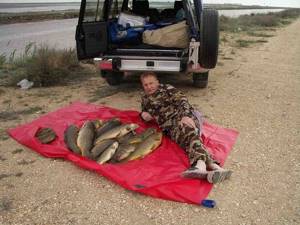
A huge advantage of Caspian fishing is the opportunity to enjoy the beaches during your fishing season. If you decide to go Caspian fishing, ask local residents which places are best to choose. Then your vacation will be complete.
Interesting facts about the Caspian Sea (15 photos) » Trinixi
As you know, the Caspian Sea is the largest enclosed body of water in the world, although at the same time, its size is even larger than some other seas. What’s most interesting is that scientists are still debating whether the Caspian Sea is considered a lake or a sea. In the northern direction, the lake extends for more than 1000 kilometers, and in the eastern direction – for 435.
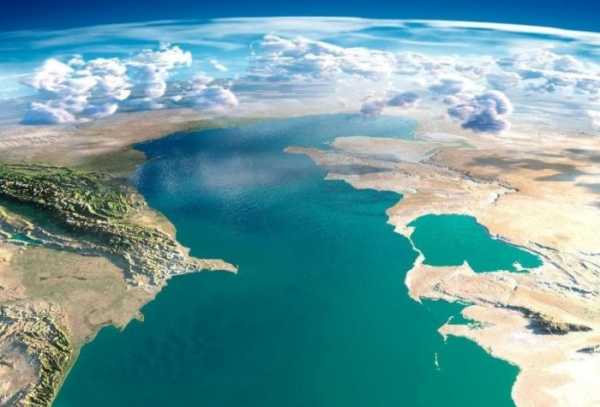
Depth: At the deepest point of the Caspian Sea, the water surface is separated from the bottom by a distance of more than a kilometer (1025 m).

The water level in the Caspian Sea is unstable, but there is a tendency to decrease.
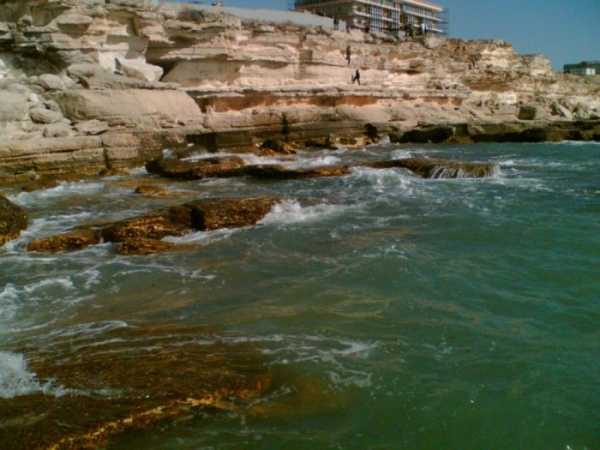
The Caspian Sea is located on the border of Europe and Asia.
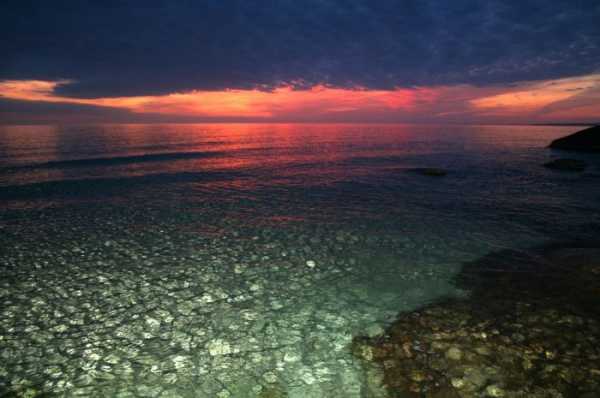
The waters of the Caspian Sea wash five states, with Russia owning the smallest section of its coastline among other countries.
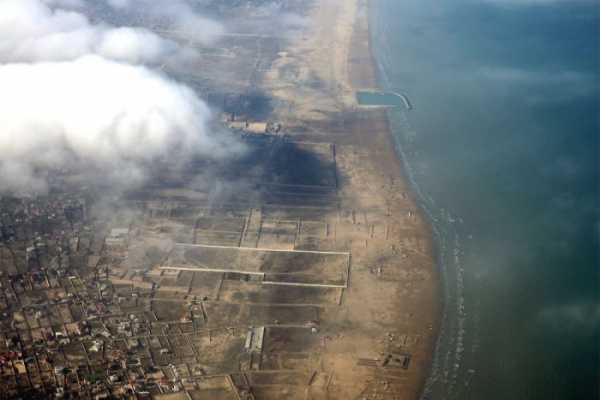
There is a scientific theory according to which the Black and Caspian seas were one whole about ten thousand years ago.
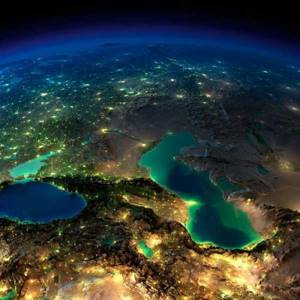
The Volga River brings most of the water to the Caspian Sea.

More than a hundred different species of fish live in the waters of the Caspian Sea. In fact, this is not so much - for example, in the Lena River there are more species of fish. —
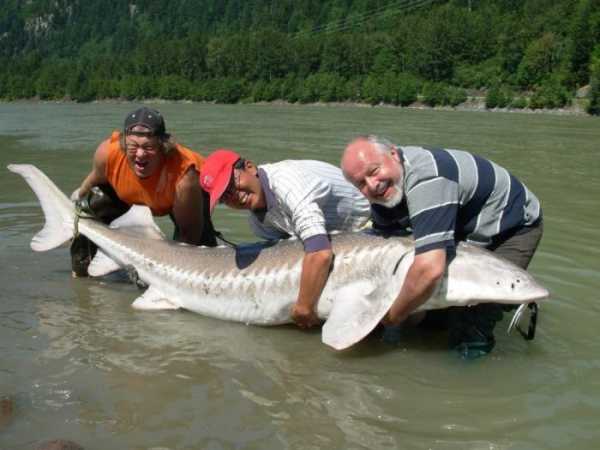
It is in the Caspian Sea that nine-tenths of all black caviar produced in the world is mined. The most expensive caviar is Almas, an albino beluga caviar occasionally exported from Iran. Packaged in pure gold jars

The water in the Caspian Sea is completely renewed every quarter of a thousand years.
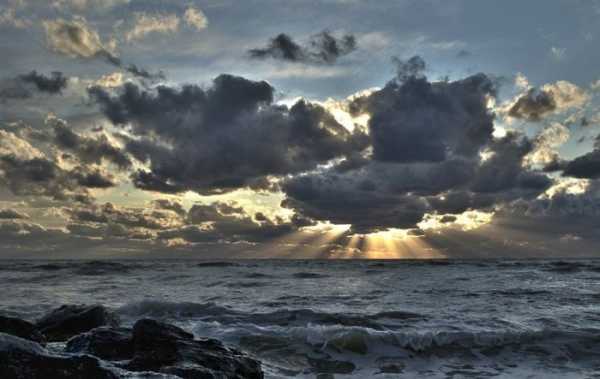
The largest beluga caught in Russia in 1921 still holds the title. She weighed 1224 kg and was caught in the Caspian Sea. The giant fish was filled with caviar. The photo of the largest beluga is simply amazing. The king fish is comparable in size to ocean monsters: sharks, killer whales, narwhals.
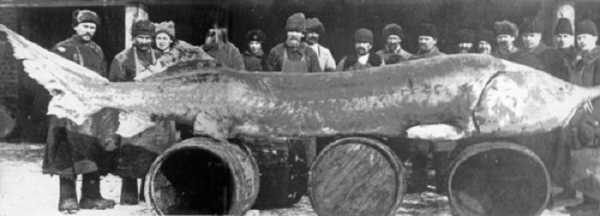
The area of the Caspian Sea is larger than the area of Japan and slightly smaller than the area of Germany. The current area is approximately 371,000 square meters. km —
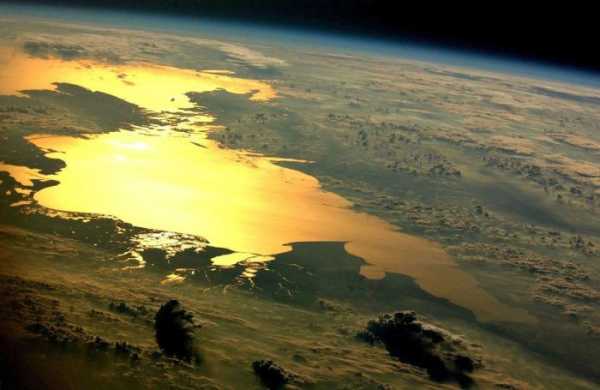
If we consider the Caspian Sea to be a lake, and not a sea, then it will be the third in depth, giving way to the first two places to lakes Baikal and Tanganyika
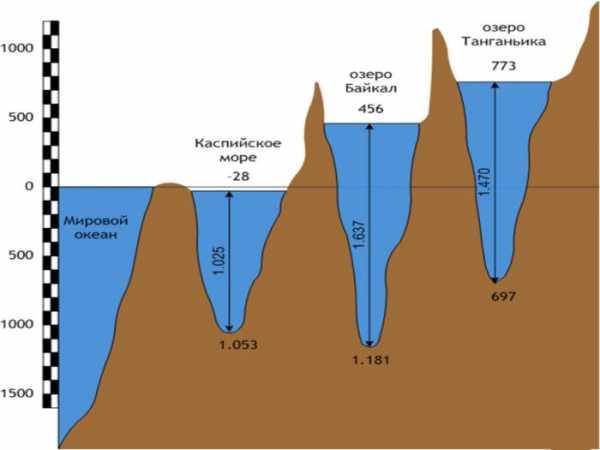
The sea is home to 850 species of animals. The most unique animal of the Caspian Sea is the Caspian seal. In past years, the Caspian seal could easily be found throughout the entire sea. Local residents even claim that while swimming in the sea or fishing, one could easily see seals swimming nearby. At the moment, the population of the Caspian seal has decreased by 10 times, and the species is on the verge of extinction.

Again, if we consider the Caspian Sea to be a lake, then this lake will be the largest on Earth.
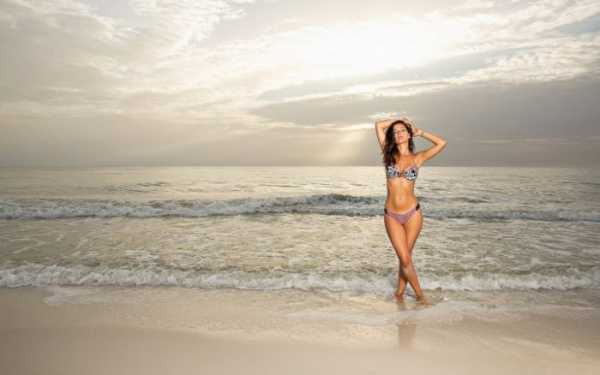
From here
trinixy.ru
Caspian Sea on the map
Where is the Caspian Sea located? It is located on the continent of Eurasia. It is interesting that its eastern coast is located in Asia, and its western coast is in Europe. Conventionally, the sea is divided into several parts:
- Northern Caspian;
- South Caspian;
- Middle Caspian.
Of these, only the Northern Caspian is a sea shelf. It contains only 1 percent of the total volume of water and ends at Chechen Island, located near the Kizlyar Bay.
Which countries is washed by the Caspian Sea? There are 5 states on the shore of the lake:
- Azerbaijan;
- Iran;
- Turkmenistan;
- Kazakhstan;
- Russia.
The largest coastline runs through the territory of Kazakhstan; in second place, according to this indicator, is Russia. The coast of Azerbaijan has the shortest length, but it owns the largest port - Baku.
There are also other large settlements on the coast of the salt reservoir:
- Anzali (Iran) – 111 thousand people;
- Aktau (Kazakhstan) – 178 thousand people;
- Atyrau (Russia) – 183 thousand people
Astrakhan also belongs to the coastal cities of the Caspian Sea, although the city is located 69 kilometers from the coast. Other Russian cities on the seashore include Makhachkala, Derbent and Kaspiysk.
